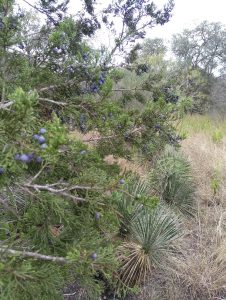These plants are wild. They made up their own minds to live on the farm and they look after themselves here.
Wild animals are here, too, using the plants for food and shelter.
Many wild flowers feed insects while blooming. When they finish blooming, their seeds feed birds and other animals.
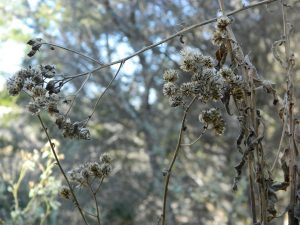
Lichens, mosses, and branches provide nesting material for birds and small mammals.
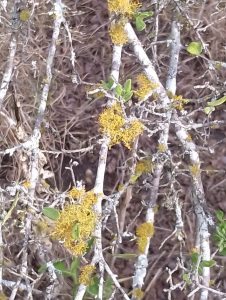
This barrel cactus is Echinocactus texensis, also called Horse Crippler. It grows very low to the ground where it would be easy and unpleasant to step on it.
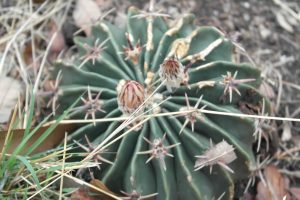
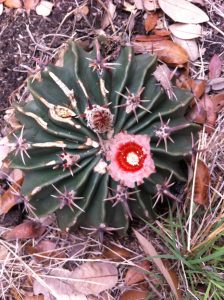
This milkweed is Asclepias asperula, Antelope Horns. It’s popular with butterflies and other insects, including the Large Milkweed Bug, Oncopeltus fasciatus, shown here.
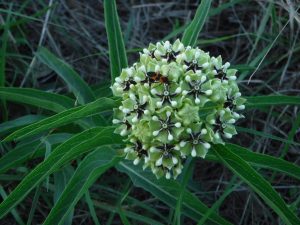
Matelea reticulata, Pearl Milkweed Vine, grows quietly in the shade. It can be easy to miss, except for the tiny shining pearl at the center of each greenish flower.
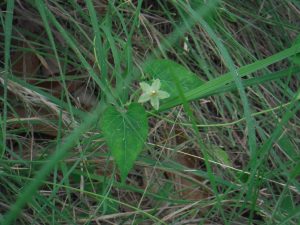
Texas Bluebonnet, Lupinus texensis, sprouts in winter to show where the blue flowers will be visible in spring. The seed pods form as summer approaches.
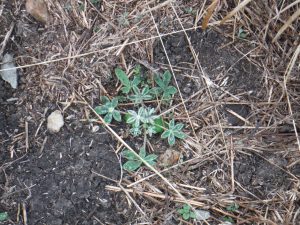
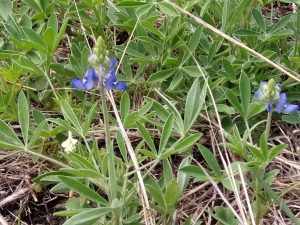
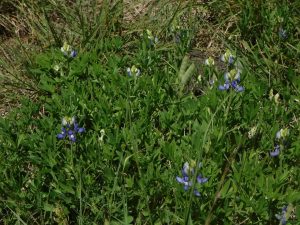
Texas Indian Mallow, Abutilon fruticosum, blooms yellow in warm weather and feeds butterflies. The flowers become brown seed pods, good winter food for birds. Deer like the hairy leaves.
Cotton, cultivated on large farms nearby, is another member of the large mallow family. Cotton flowers open white and become pink; cotton seed pods overflow with white fibers. This is not cotton but a distant, wild cousin.
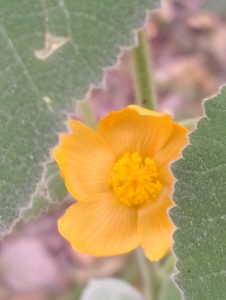
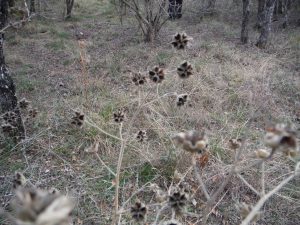
Texas Persimmon Diospyros texana trees are covered with waxy white flowers and singing bees. In summer, female trees bear juicy green fruit. All year, the trunks change as papery bark peels away from the smooth wood.
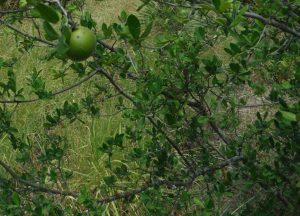
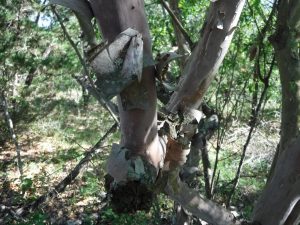
Blue fruit on female Ashe Juniper Juniperus ashei trees feeds birds, deer, and small mammals.
